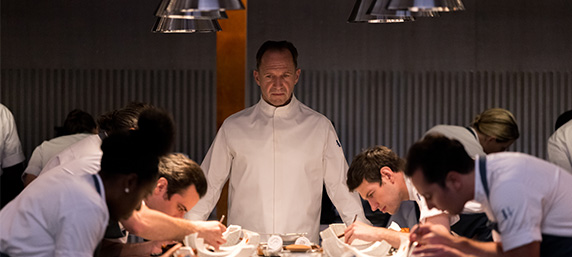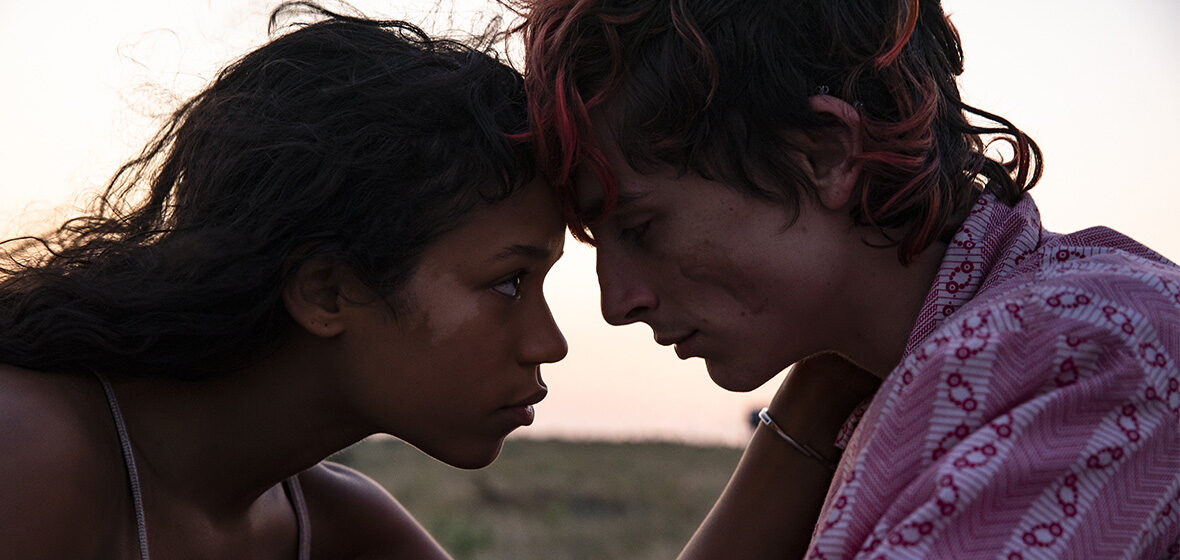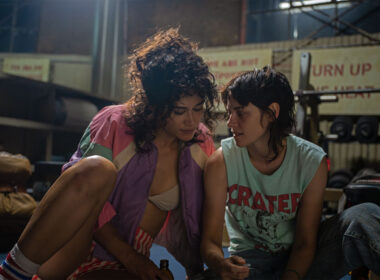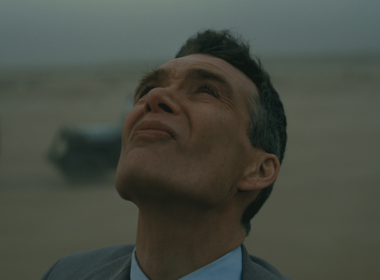Bones and All
5 out of 5
Halfway through Luca Guadagnino’s Bones and All, Joy Division’s seminal Atmosphere starts: the background music to a montage of the two protagonists, Maren (Taylor Russell) and Lee (Timothée Chalamet), enjoying fleeting moments of happiness. I was elated. At that stage I was already enchanted by Bones and All. But then, from the moment Bernard Sumner’s keyboard sounded, I was totally captivated. Now it felt like the film was talking only to me: “Walk in silence / don’t walk away, in silence / See the danger / Always danger”. For me, the song has always been about an older misfit telling a younger one that all will be worth it in the end, even if things aren’t okay at the moment. I quietly whispered the lyrics like a prayer as I continued watching.
When the story starts, Maren is living with her father (André Holland). Maren’s secret is that she’s a cannibal, an eater, with primal urges that every so often need to be satisfied. Her father does his best to protect her, but abandons her after yet another attack forces them to move state. Maren heads off on a trip to find her mother and finally understand why she is just who she is.
As in this film, the great American story is often characterised as a road trip through the country; this journey is a metaphor for the pioneering spirit and for the potential for even the lost to be able to find themselves. What Maren finds on her journey is that there are more people like her. The first is Sully (Mark Rylance), a strange older man with a set of self-imposed rules he abides by. And then there’s Lee, a dreamy vagrant with ripped jeans and dyed hair, who belts out Kiss’s “Lick It Up Out Loud” (“Don’t want to wait until you know me better / Let’s just be glad for the time together”), and doesn’t have any rules. Lee eats when he needs to, often targeting bullies, and continues his trip with no set destination. He frequently returns home for a couple of days to visit his sister Kayla (Anna Cobb), but just as quickly is back on the road again.
Guadagnino and his cinematographer Arseni Khachaturan frame the story like an early Terrence Malick. Their treatment reminds me of the romantic lawlessness of Badlands: grainy picture, handheld camera, an air of capturing the moment that intensifies the natural performance of the characters. I could have sworn that at a particular moment the cameraman dropped the camera, and Guadagnino kept the shot in the final film as if this were a private moment that couldn’t be unbroken.
Chalamet has worked before with Guadagnino, in Call Me By Your Name, my favourite film from 2017, and it’s noticeable how thoroughly the two understand each other. Lee has a mysterious aura that can come only from a filmmaker trusting his actor, and vice versa. A lot of the character’s background isn’t disclosed, but Chalamet plays him with the confidence that comes from playing a perfectly rounded character.
It’s Russell who stands out, though. She transforms from a shy high-schooler into a seemingly adventurous drifter. She wears her feelings on her sleeve, guiding the audience through her own rollercoaster ride of emotions with ardent passion. We don’t trust Sully because she doesn’t. We trust Lee because she does. Her instincts are the bible of Bones and All. The scene where she meets her mother (Chloë Sevigny) is heart-wrenching — and a tremendous performance by both actors — but it’s in the small details that she shines as an actress.
There’s a scene when Maren and Lee are approached by two men (played by David Gordon Green and Michael Stuhlbarg). Supposedly eaters, they end up spending the night exchanging experiences and stories from their trips with Maren and Lee. Slowly it dawns on Maren that something isn’t right, but it’s the revelation of a moral quandary that seals the deal for her. It’s a great scene, filled with tension and dread, carried by Stuhlbarg’s ferocity and Russel’s restraint.
Guadagnino is no stranger to gruesomeness. His 2018 remake of Suspiria was a beautiful and grisly film, but he doesn’t make horror in the strictest sense. He cares for every character — even the lonely and sultry Sully deserves our sympathy to a certain extent. He does this by always humanising every victim. In the scene where Maren and Sully “share” an old lady who died of natural causes, the camera cuts to photographs in her room to remind us that there is a person behind the blood and guts. Guadagnino sees his characters as real people, not pawns to use for story purposes. Kayla, for example, exists not to add another dimension to Lee’s character but as her own person, a person with real, conflicting emotions. I wanted Guadagnino to stay with her for a while, see her trying to distract herself, listening to Cyndi Lauper with her friends, and coming to understand why her brother couldn’t stay for more than just a few days.
The soundtrack by Trent Reznor and Atticus Finch complements both the gruesomeness and the beauty. It builds up the romance between the two — and a sudden key change reminds us that the world is never safe for the free spirits.
After the credits have rolled, Bones and All sticks with you — for days afterwards. This seems natural to me, as real as Maren’s unquenchable desire to feed on humans. For a coming-of-age story, its most important question is how to live with what will never change: our nature. The answers Maren is searching for are not there, and that’s what becoming an adult is all about.
It’s all rounded off with the final great needle drop of the film, New Order’s “Your Silent Face” — “Rise and fall of shame / A search that shall remain / We asked what you’d seen / You said you didn’t care”.

The Menu
4 out 5
From one taste-dominated offering to another! At least the food in The Menu is shot to appeal to the audience. Not that human guts don’t provide sustenance (I wouldn’t know), but after watching The Menu you’ll leave the cinema hungry.
The Menu is an easy film to recommend. It’s a straightforward, tight thriller with a compelling mystery. It’s unashamedly old school in its approach to the genre. If it was made in the 50s, it would have had a little bit more grit and turned into a noir, but in 2022 it’s like a breath of fresh air. Remember when films were well-plotted, entertaining romps? Well, apparently this type is back.
The story is simple. A group of people partake in a degustation night hosted by renowned Chef Slowik (Ralph Fiennes). The customers are a selection of high-class, wealthy and privileged people, from finance dude bros to vain food critics. There’s a washed-up movie star (played with delightful self-awareness by John Leguizamo) trying to impress his assistant, and then there’s Taylor (Nicholas Hoult). The rich foodie boy is accompanied by the only odd one out in this story — Margot (Anya Taylor-Joy).
As the night progresses, the dishes become more specific to the clients, revealing secrets they all thought to be buried. The first turning point comes halfway when Slowik, presenting a new dish, says that everyone is going to die on that night. This is not much of a spoiler: the revelation is even included in the trailer. But it does serve to raise the stakes.
Margot is the conduit for the audience. No one else is not portrayed sympathetically, and the demise of the other characters is not of much interest, but Margot is different. This is a detail Slowik notices right away. First annoyed that she’s present (Taylor was supposed to bring someone else), he quickly finds common ground with her in an almost paternal way. The interaction between the two is very compelling, and if any producers are paying attention they’ll pair Fiennes and Taylor-Joy in another project.
The thing about films about food is that they are the easiest way for a filmmaker to tell a story about the act of making a film. Chefs are larger-than-life characters, driven by egos, who have their work scrutinised by the anonymous audience, privileged dunces and (gasp) critics. There’s always a critic there onto whom the chef (read, filmmaker) can channel all his anger. The critic was central to the inciting incident in Chef, part of the climax in Ratatouille. In The Menu, the fate of the critics is even more demeaning — they find they are only as important as everyone else, regardless of what they see as their own higher value.
It’s easy to find the correlations between The Menu and filmmaking. A director has to deal with the scroungers who finance his film. There are the fans who consume his work for the status, and those who obediently follow the artist. The only innocent person is Margot or, in this case, all of us in the audience. It’s a reductive vision of the world, and the only time the film cops out. Still, I‘m willing to let a shallow exploration of artist’s woes pass, if it produces an exuberant and entertaining result.
It makes sense that the writing team, Seth Reiss and Will Tracy, come from the world of television, and particularly from the writing room of HBO’s show Succession, another terrific critique of the excesses of the rich. Television builds itself around the plot and other tricks focused on keeping the audience interested enough to continue watching the next episode. Good television (and Succession is among the best) is written with knowledge and technique. There’s some artistry, but the clear goal is to take the audience through a journey, and every beat and line is scrutinised to achieve the best results. Nothing wrong with that, and genre films do benefit from this brevity.
Something was missing, though. A bit of poetry with some heart and soul. It’s only after watching the film, as I’m running out to find the nearest place that will serve me a juicy burger, that it comes to me how the lean script sacrificed its heart and soul for a shortlived rollercoaster ride. But it doesn’t make the film less worthy. Not every experience has to be memorable and life-changing — if anything, that’s the lesson Chef Slowik has to learn.




